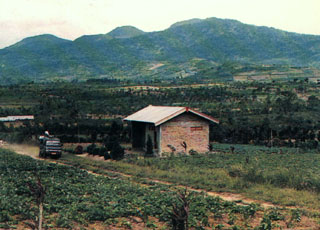Report on Kaba (Indonesia) — 13 July-19 July 2011
Smithsonian Institution / US Geological Survey
Weekly Volcanic Activity Report, 13 July-19 July 2011
Managing Editor: Sally Sennert.
Please cite this report as:
Global Volcanism Program, 2011. Report on Kaba (Indonesia) (Sennert, S, ed.). Weekly Volcanic Activity Report, 13 July-19 July 2011. Smithsonian Institution and US Geological Survey.
Kaba
Indonesia
3.5156°S, 102.6261°E; summit elev. 1962 m
All times are local (unless otherwise noted)
On 14 July CVGHM reported that, since the Alert Level for Kaba was raised on 20 October 2009, seismicity had fluctuated but decreased overall. During September 2009-May 2011, when weather permitted, white plumes were seen rising 25-300 m above the crater rim, and during June-July 2011 diffuse white plumes rose 50 m above the crater rim. The Alert Level was lowered to 1 (on a scale of 1-4) on 12 July.
Geological Summary. The Kaba volcanic massif is ~8 km long, elongated WSW-ENE, with a summit area that includes multiple large craters. On the SW is the 1-km-diameter Hitam crater, with the Malintang cone and 400-m crater ~1 km NE, on the flank of the active 1-km-diameter Kaba crater. The smaller Mali crater is connected to Kaba, and Vogelsang cone is just beyond that to the NE. Another large forested cone is SE of the active craters. Most recorded eruptions have originated from the summit craters, and affected only the summit area. However, the upper-NE flank crater Kawah Vogelsang also produced explosions during the 19th and 20th centuries.
Source: Pusat Vulkanologi dan Mitigasi Bencana Geologi (PVMBG, also known as CVGHM)

